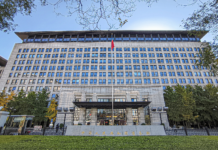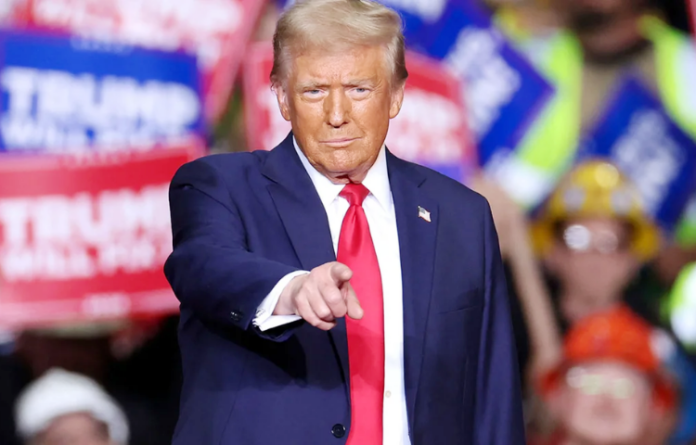A warm breeze swept through Islamabad as news spread: Donald Trump has won the US election and was heading back to the White House. His return brought a mix of excitement and worry. Pakistan still remembered Trump’s first term, a time of tense relations, unpredictable decisions, and difficult negotiations. The relationship often felt unstable, like navigating a risky deal.
But this time, could Pakistan see Trump’s presidency as a chance rather than a problem? With his “America First” policies and unexpected moves, Trump is likely to shake up the world once again. However, this could also give Pakistan an opportunity to find its place in the changing global order and build a stronger strategy.
Pakistan needs to act quickly and embrace strategic adaptability. It is not enough to simply react to a Trump-led Administration; Pakistan needs to proactively shape its future. To become strong in a turbulent world, Pakistan first needs to be strong at home. The real question is not whether Pakistan can navigate this shift, but whether it is prepared to seize the opportunity for resilience and growth. The time to act is now
Pakistan can learn from past lessons and confidently navigate the future. By being proactive and planning, Pakistan can safeguard its interests and take charge of shaping its future. Let’s explore some possibilities.
Let’s start by reviewing some key lessons from the past; Pakistan’s primary concern and a lesson during Donald Trump’s first term was relying too heavily on its security relationship with the USA, focusing almost exclusively on military ties. This narrow approach left Islamabad vulnerable when Trump shifted his attention to cutting foreign aid and prioritizing his “America First” agenda. When Trump suspended $300 million security aid to Pakistan in 2018, it was a wake-up call about the fragility of our reliance on military ties alone.
Another key lesson was Pakistan’s lack of engagement with US institutions outside the White House. When Trump suspended security aid in 2018, it became clear that Pakistan had underestimated the role of Congress and think tanks in shaping foreign policy. While Pakistan focused on the White House, it largely ignored Congress, which holds power over aid allocations, creating a gap in understanding and influence, especially during the moments of tension.
To avoid these past inconveniences, Pakistan should shift its focus beyond defense and prioritize economic diplomacy, building stronger ties with US businesses, innovation sectors, and trade representatives. Pakistan also needs to understand that the key to a more robust US-Pakistan relationship lies in diversification. Engaging with Congress, think tanks, and even the US public is critical. By broadening its diplomatic approach, Pakistan can ensure a more resilient presence in US policy debates, regardless of who holds the presidency.
In short, to thrive under a second Trump Administration, Pakistan must move beyond a one-dimensional relationship with the USA and adopt a multi-faceted diplomatic strategy that considers the broader geopolitical dynamics. With countries like India gaining more support to counter China’s rise, Pakistan faces the challenge of balancing its relationships with both the USA and China. By engaging with the full spectrum of US political and economic life while navigating global power shifts, Pakistan can establish a resilient, long-term diplomatic approach.
Furthermore, with Trump’s return to the White House, Pakistan is likely to face more challenges. Imagine standing at the crossroads of two colossal forces, the USA and China, each pulling in opposite directions. Under Trump’s previous leadership, the USA took a firm stance against China, and his next Administration may push for an even sharper divide. This puts Pakistan in a difficult position by balancing its growing economic ties with China and its long-standing security relationship with the USA.
The danger lies in being forced to choose sides, risking isolation from one of the global powers. Though there is no overt demand to choose but covert pressure may exist in future, in which case Pakistan may instead adopt a strategy of neutrality, managing its relationships with both the leading powers to protect its national interest without compromising it.
Pakistan can serve as a bridge, engaging China through projects like CPEC while cooperating with the USA on shared security issues like counterterrorism. By highlighting its strategic importance in regional and global security, Pakistan can remain indispensable to both the nations, potentially avoiding conflict.
Considering Trump’s agenda for reshaping global trade, and with protectionism on the rise, Pakistan can no longer rely heavily on US. trade and aid alone. For example, under Trump’s protectionist policies, Pakistan faced a slowdown in textile exports to the USA, while countries like Bangladesh benefited from GSP trade terms. Additionally, US military aid to Pakistan was reduced in 2018.
To navigate Trump’s policies, Pakistan must seize this as a key opportunity to shift its economic strategy, building resilience by diversifying trade partnerships and reducing dependence on the U.S. as relying on the US market alone is risky, especially with Trump’s past rigid policies and Agenda 47 of tariffs and isolationist policies. Exploring alternatives like CPEC and RCEP can help Pakistan build resilience against global shifts.
Pakistan should diversify its economic partnerships, tapping into opportunities in Southeast Asia, the Middle East, and Africa. Strengthening agriculture, textiles, and investing in technology and green energy can drive growth independent of U.S. influence. More importantly, Pakistan needs to shift from relying on aid to building stronger, more diverse economic partnerships. By forming new trade agreements and aligning with emerging markets, it can secure its economic future and reduce dependence on U.S. policies.
Pakistan’s foreign policy needs to be proactive, especially with Trump back in office. Learning from the past, Pakistan needs to develop a broad diplomatic strategy, balance relations with global powers, and diversify its economic ties with other leading countries.
Pakistan needs to act quickly and embrace strategic adaptability. It is not enough to simply react to a Trump-led Administration; Pakistan needs to proactively shape its future. To become strong in a turbulent world, Pakistan first needs to be strong at home. The real question is not whether Pakistan can navigate this shift, but whether it is prepared to seize the opportunity for resilience and growth. The time to act is now.






















